| Church Home Page | Final Setup and Review | Lou's Home Page |
When we began designing the system, we had architectural plans and began working off of them. That proved to be a giant waste of time. "As builts" rarely wind up looking like the design plans. From the inception, everything was designed to "home run" back to the sound booth. While not optimal from a performance point of view, it does limit the amount of "help" contributed by all the sound engineers. Since the facility is also used as a preschool, we wanted delicate stuff in one place that would be off limits to the kids.
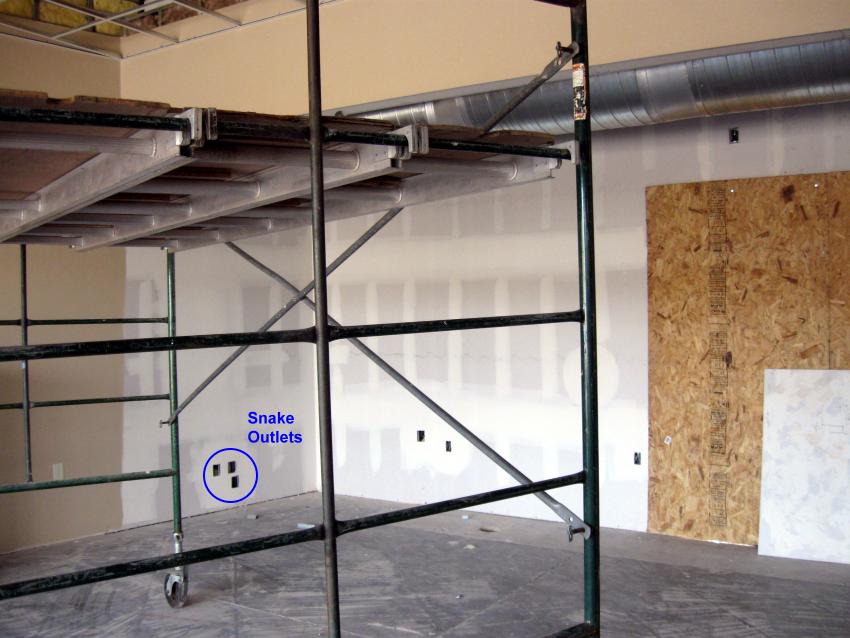
We purchased two 16 + 4 channel 100 ft snakes to handle the band area. Before drywall went up, we buried 3" PVC conduit behind the walls so we could fish the snakes through the suspended ceiling. It wasn't fun fishing them up the tubes, but we bound the mixer ends to the main cable, then wrapped the whole shebang with saran wrap. That seemed to do the best job.
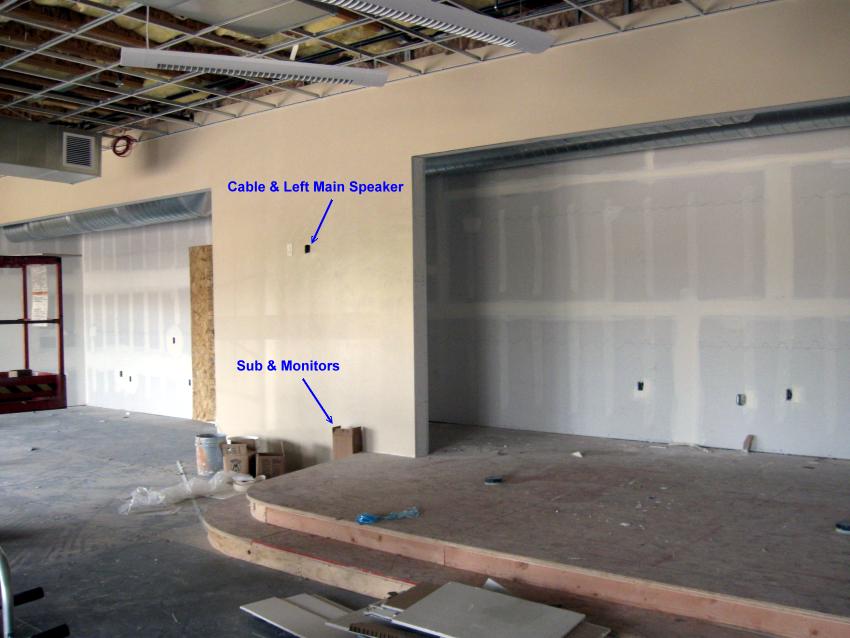
The false wall turned out to be a good feature for us. We had the contractor fill part of the stud cavity with 2X6 so we could hang the monitors and tops. Two more conduits here. The top one carries tv coax, Cat5, and the speaker cable for the top main. The lower box has two speaker cables. We used some 12ga white zip cord on buyout from Parts Express.
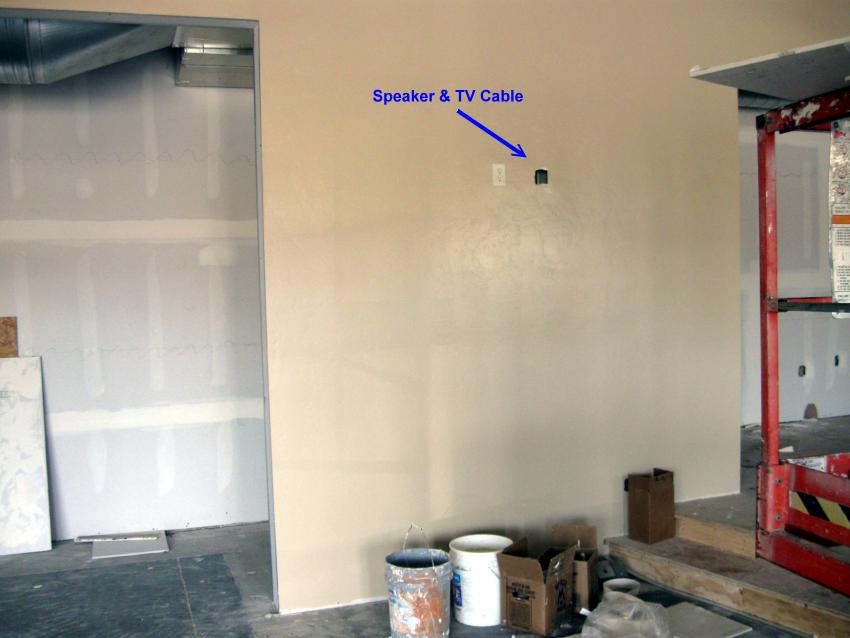
On the right side, we ran the same wire bundle + one extra Cat5 + one extra speaker cable. Everything went through the trusses above the suspended ceiling to the sound booth in the back. Each TV and speaker is independently controlled, so the room can be divided for two independent events.
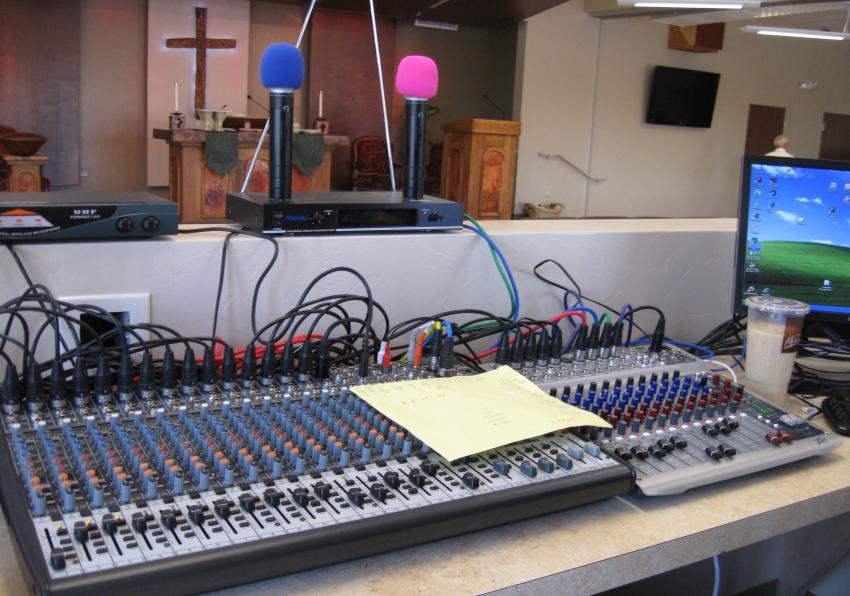
Here are our mixing boards, PC, and the returns from the stage snakes. The big one is Behringer, smaller is a Peavey. The PC controls the TV monitors and acts as our source for prerecorded music. Everything is XLR on the board side. Though we ordered snakes with 4 1/4" inputs (for instruments) we got all XLR on the stage side. We added 3-4 adapters and it seems square. One snake came with 5 board side XLRs broken or cold soldered. Glad we had extra inputs.
Using a combination of colored microphone cords and colored wind socks, the sound meister can visually determine which vocalist or instrument is on each channel. Great, inexpensive trick that save bunches of time. Preacher and the pulpit are wireless, everything else is hard wired.
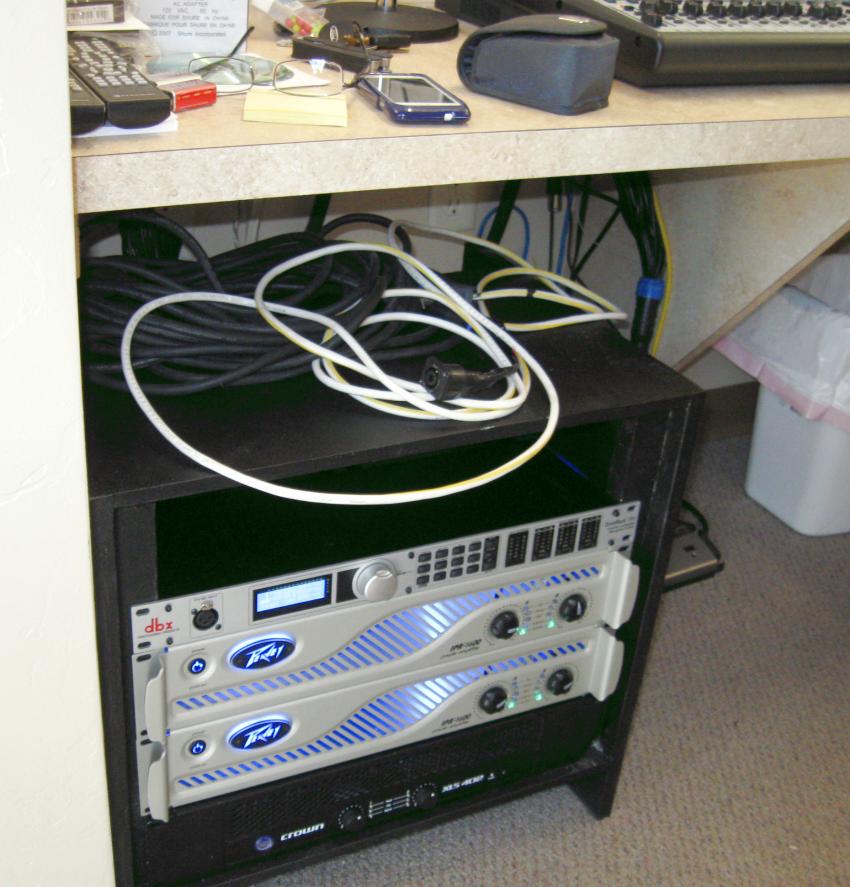
Our rack mounts. The Peavey's are providing all the power. (The Crown was donated, we'll use it eventually) Bottom Peavey runs the mains off "High" feed from the Driverack PA+. We're running LR24 @ 110Hz. Top amp feeds the sub ("Low Mono" 45Hz LR24 highpass, 100Hz LR12 lowpass) and the stage monitors from one of the "Midrange" off the Driverack (120 Hz, LR24). We can't use the RTA with this setup, but we left the mids off, ran it when we started, and saved the settings as a basis for tweaking manually. If I had it to do over, I'd probably go with something a bit more flexible in programming and give up the RTA.
For our purposes, the DriveRack is under utilized. Basically we just set it & forget it. We're still learning how to use all the bells and whistles, a pair of the DSP amps would probably have done just as well. Those little Peavey IPR 1600 amps are real gems. They are just idling in our setup. One drives a 2 ohm load (stage monitors) on one channel, and an 8-10 ohm load on the other channel (Titan 39). We used Speakons for all speaker & amp connections.
| Church Home Page | Final Setup and Review | Lou's Home Page |